
We all know that in order to be successful, a mobile F2P project needs competent live-ops operation. In other words, you need to provide your players with a continuous stream of quality content.
Gaming events grab the attention of players and stimulate FOMO - loss of profits syndrome - which leads to improved retention and even higher LTV.
Everyone wants such events to be truly remembered. One of the possible ways to do this is through collaboration with other brands.
What is the profit?
Crossover events allow you to show your content outside of the game and thus attract new players. They can include narrative elements, special game modes, or exclusive collectibles that are only available during the event.
In this article, we will talk a little about the essence of partner events and consider several well-known cases of such collaborations of varying degrees of success.

Collaborations are a fun way to interact with each other and build brand awareness among all stakeholders. For the game where the event takes place, it provides the following potential benefits:
- Re-engaging an existing player base. Collaboration is often an unexpected and unique event that is unlikely to be repeated in the same way. This kind of thing attracts players and causes them a stir.
- Attracting new players. In a best-case scenario, the game will acquire a number of new players among those who care about the collaborating brand. To make the most of this opportunity, the following questions are worth asking:
- How much will the composition of the partner target audience appreciate the same as their own - for example, visual and gameplay?
- To what extent will this collaboration help you reach new players and convert their interest into installs?
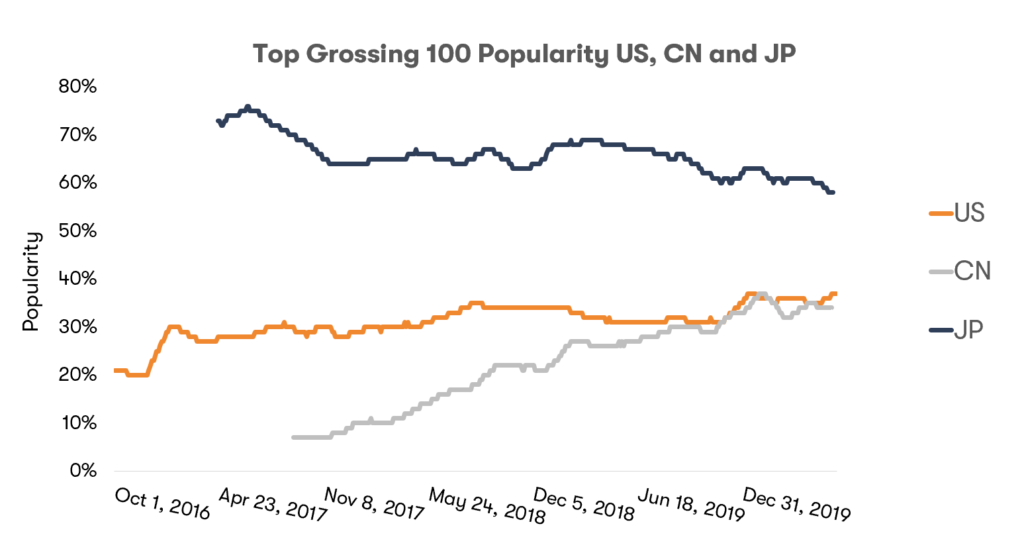
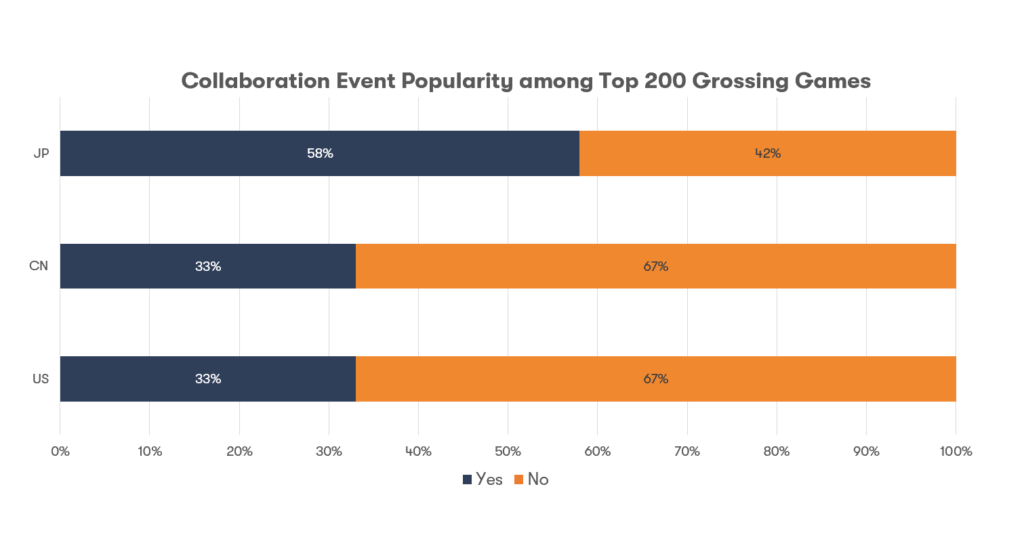
How popular are affiliate events?
Let's take a look at the graph above and see that they have considerable success in Japan, China and the United States, while in the latter two countries their popularity is only growing.
Examples of cases
Let's take a look at a few real cases of event collaboration in games. Of course, there are many other cool examples (let's take the same Fortnite), and you can find their analysis on Game Refinery. Please note that all data is for the US iOS market.

Identity V + Persona 5 / Danganronpa
The asymmetric PvP horror game Identity V has had two successful collaborations.
In the fall of 2019, NetEase brought a number of characters from the Persona franchise (including the Joker) into the game. After completing various tasks, players could receive characters and their associated costumes, accessories, graffiti, and portraits.
In May 2020, a crossover with Danganronpa propelled Identity V into the top 60 grossing positions in the US. As part of the event, a special currency - monocoins - was used to exchange it for various improvements, as well as all kinds of accessories, clothing and portraits.
The results of these collaborations are evident, just look at the graph. The partnership with Persona raised Identity's revenues instantly from $ 3,000 to $ 49,000, and with Danganronpa, from $ 9,000 to $ 65,000.


Dragalia Lost + Fire Emblem / Megaman / Monster Hunter
Nintendo's RPG portfolio includes not only Fire Emblem Heroes, but Dragalia Lost, a game outside of any mainstream franchise, and therefore, perhaps so popular for crossovers.
In April 2019, DL hosted a Fire Emblem event featuring a story-driven PvE campaign and temporary characters like Alphonse and Martha.
At the end of the same year, there was a collaboration with Megaman, in which players were able to play as the main protagonist of the series, as well as receive exclusive items of equipment.
The last crossover took place in January this year, when DL launched an event alongside the popular Monster Hunter franchise. The crossover event brought some of the characters and popular bosses from Monster Hunter into the game, such as the dragon Rathalos.
Looking back at the graph again, we see that collabs with famous franchises have led the game to some of the most significant spikes in revenue and installs. For example, events with Fire Emblem and Monster Hunter have helped the company to peak more than $ 60,000 in revenue.
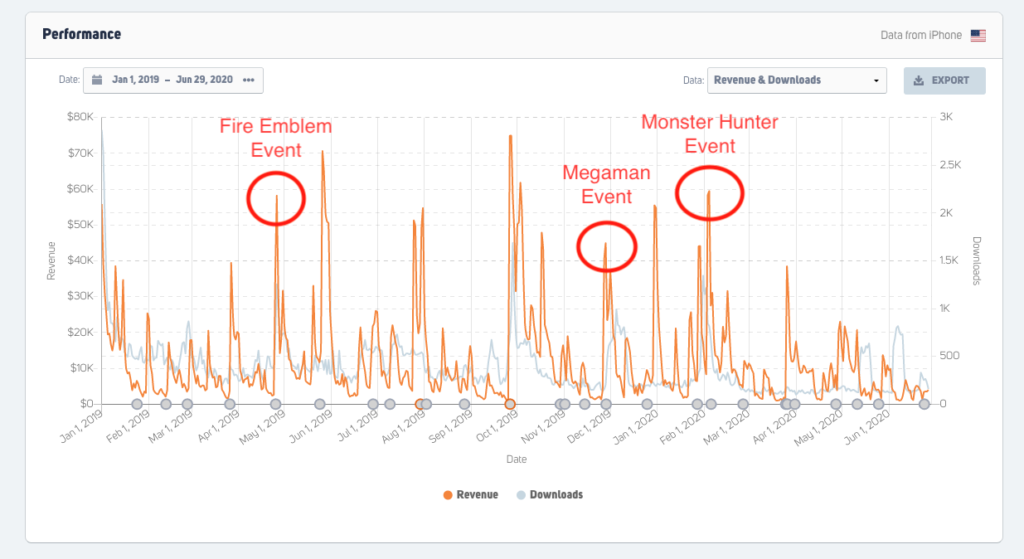
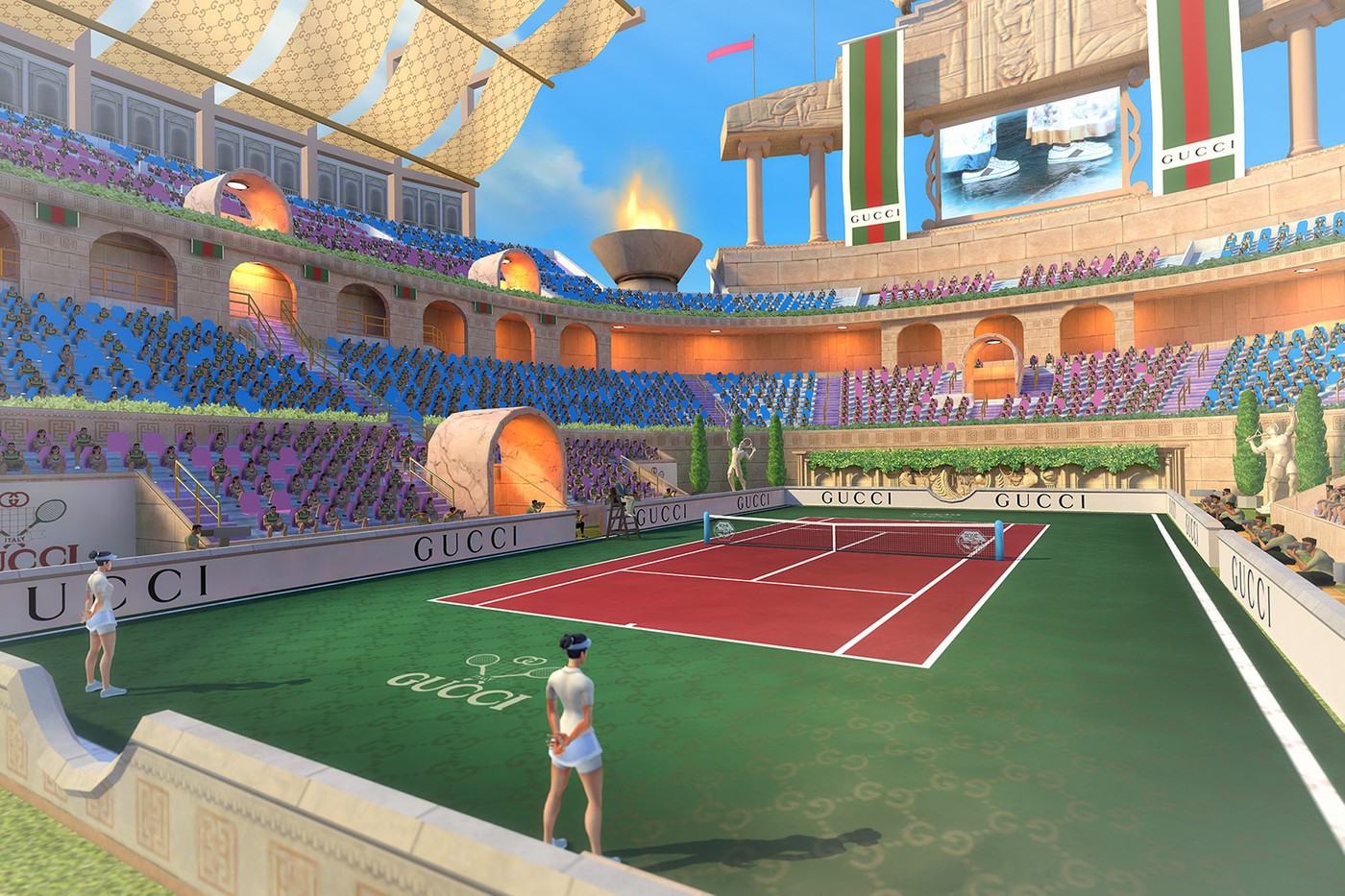
Tennis Clash + Gucci
This case is an example of the fact that you can collaborate not only with other game franchises, but also with brands that do not belong to the industry at all.
In June 2020, the Tennis Clash launched an event allowing players to dress up their avatars in Gucci branded clothing. In the future, Wildlife Studios plans to organize a tournament as part of the same collaboration.
In the meantime, it seems that the ongoing event is not very interesting for the audience. Yes, it happens.


UNO + BTS
Last month, the mobile version of the UNO card game teamed up with the biggest K-pop group BTS. The musicians have already had partnership campaigns with brands such as Coca-Cola, Hyundai, and this game is not the first for them. So, last year, the release of the visual novel BTS World, published by the publisher Netmarble, took place.
As part of the event, players can get card covers, avatars and other cosmetic content associated with the group, as well as a store with their own temporary currency.
As you can see from the graph, the collaboration did not go unnoticed by the fans and brought the game a jump in profit, more than half as much.
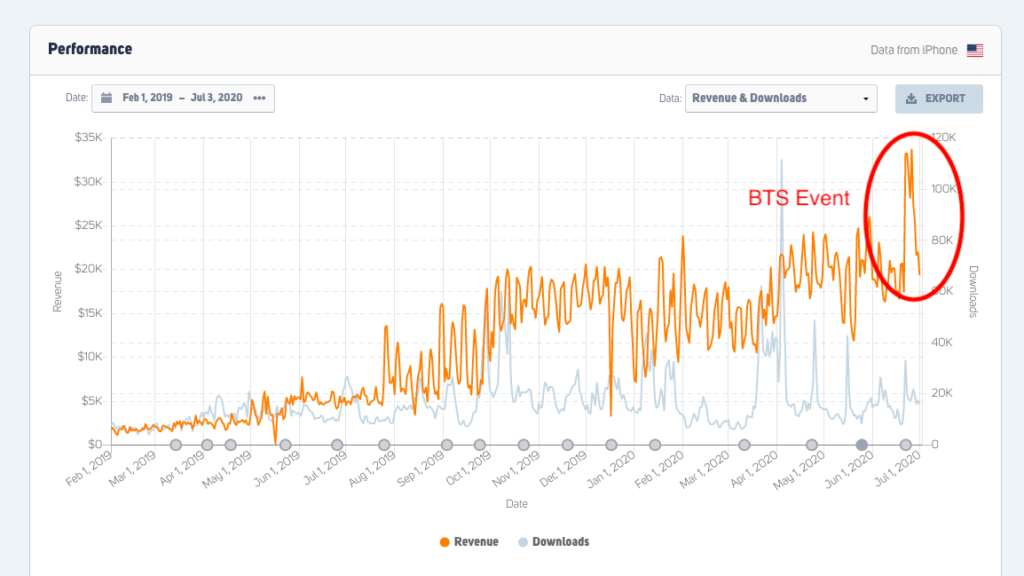

Epic Seven + Kizuna
Last month turned out to be rich in collaboration events, so the Japanese studio Smilegate introduced a joint event with the virtual YouTuber Kizuna AI into its turn-based strategy. Thanks to the ongoing event, players can get Kizuna as a hero simply by logging into the game.
Installed jumps and rhubarb on the chart can be associated with this event.
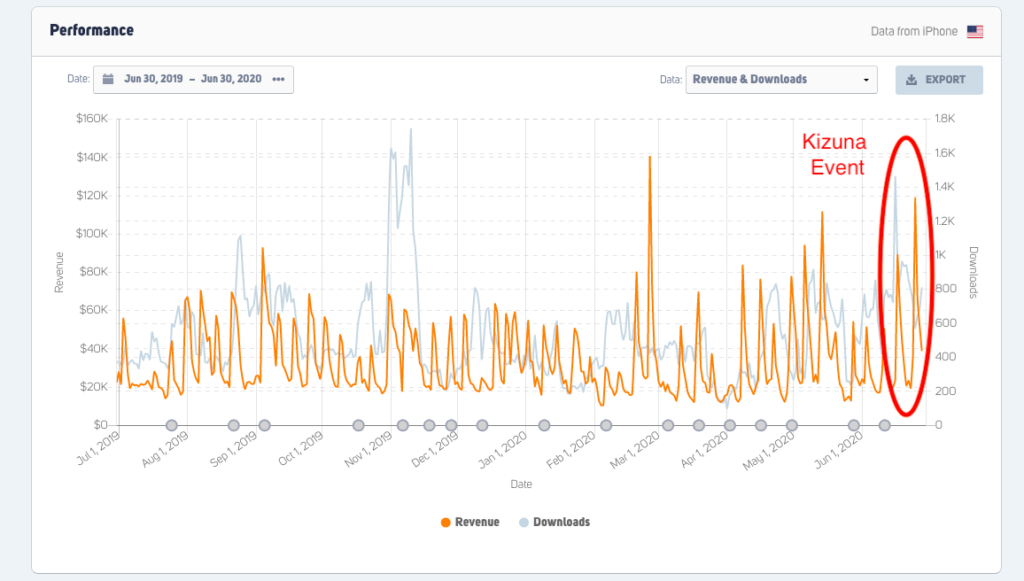
conclusions
Promotional collaborations with other brands can be a powerful tool to promote your game. However, when choosing whom to collaborate with, pay special attention to how this brand will fit into your game, how similar your audiences are, and in general, analyze whether such collaboration is relevant in the market now.